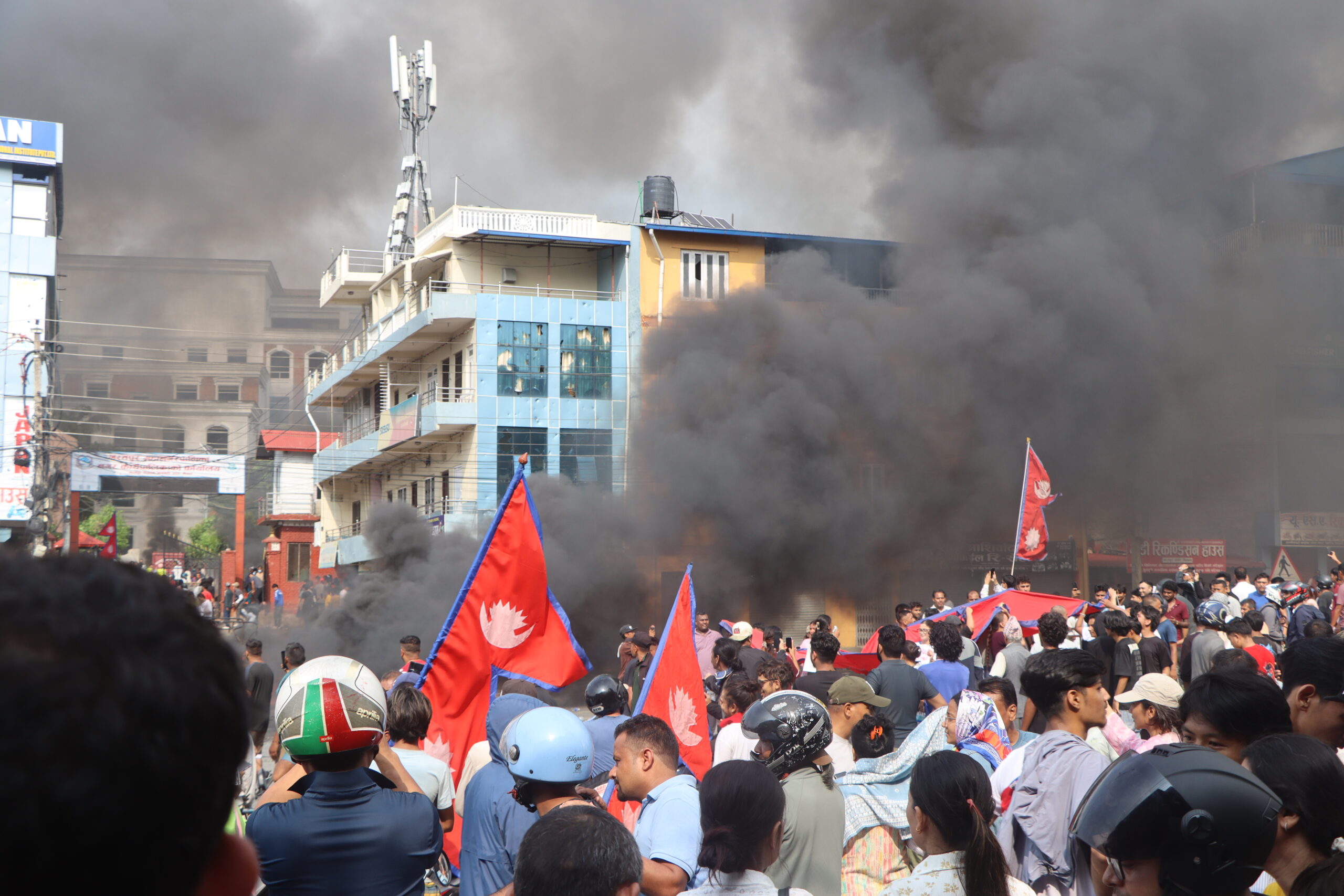“Help. Get someone to get us out of the hotel. The streets are on fire.”
That was the message I received on the night of 9 September. Our clients had just checked into their luxury hotel in Pokhara, Nepal—only to find themselves in the middle of one of the country’s deadliest waves of protests. Protestors had surrounded the hotel, cars were burning outside, and the property itself had become a target because of its political links.
What was meant to be the highlight of their Himalayan journey had turned into a nightmare.
The Call That Changed Everything
Just days earlier, on 6 September, they had arrived in Nepal full of excitement. We had been monitoring the growing unrest since 8 September, keeping close contact with our partners on the ground. Things seemed calm until the very day they reached Pokhara.
Then chaos erupted.
The car that had ferried them around for the past three days was torched shortly after they checked in. Our guide had to act quickly—not only to evacuate them from the hotel, but to secure new transport so they could continue their journey safely over the next two days.
Evacuating from a Besieged Hotel
Within minutes, our trusted driver and guide coordinated a discreet extraction. They moved the clients out of the besieged hotel under with the assistance of the hotel staff and drove them away from the chaos, closer to the mountains, where a guesthouse far from the protests kept them safe.
That one decision ensured their safety—and gave them a chance to breathe again.
Airports Closed. Clients Panicked.
When news broke that Nepal’s airports had been closed, panic set in. The clients immediately demanded evacuation flights, imagining the worst. Based on our years of experience, we knew that wasn’t going to happen—governments rarely intervene for short-term protests.
But fear can be louder than reason. They insisted we call the Ministry of Foreign Affairs (MFA) and push for evacuation.
So, I picked up the phone.
A Long Call That Proved Our Point
The call with MFA was long and, frankly, frustrating. The officer on the other end “didn’t know anything” and refused to commit to any plan. I pushed hard—insisting that someone more senior or knowledgeable get back to me. I even demanded a proper email update from someone who understood the situation.
But after all the back-and-forth, the outcome was exactly what we had already told our clients: there were no evacuation flights, no special assistance, and their advice was simply to “wait for updates” and the usual common sense practices, stay in safe places, keep in touch with family at home. 😡🥹
In other words, our ground team had more accurate, real-time information than the official channels.
Finding Calm in the Storm
The strategy we agreed on was simple but effective: stay in guesthouses outside the cities. Protestors were targeting politicians, not locals. Up in the mountains, life went on as normal.
In the days that followed, the clients managed to continue their hikes in Pokhara’s crisp mountain air, surprisingly removed from the unrest below. Meanwhile, I stayed busy behind the scenes—monitoring updates, checking on their wellbeing, and negotiating with the affected hotel to secure a full refund. Thanks to our strong relationships, the money was returned quickly—much faster than waiting for an insurance claim.
Life Back to Normal
By 11 September, the situation in Nepal began to stabilize. Airports reopened, and the clients boarded their domestic flight back to Kathmandu on 12 September. On 13 September, they flew home to Singapore—relieved, safe, and with their itinerary largely intact despite the drama.
Sometimes, the best response in a crisis is not to panic or overreact, but to wait things out with a calm head and the right people by your side.
Lessons Learned
- Stay calm – Panic clouds judgment. Waiting it out is often safer than demanding drastic measures.
- Ground partners matter – Certified guides and trusted drivers have faster, more accurate information than official channels.
- Government help is limited – MFA responses are slow; in fast-moving crises, local expertise wins.
- Travel designers are your safety net – Beyond dream itineraries, we’re there when things go wrong—so you don’t face chaos alone.
The Value of a Travel Designer
September alone saw us carry out two major rescue missions—Nepal and Taiwan. In both, our mission was clear: keep clients safe, calm, and protected, while minimizing disruption to their travels.
A travel designer doesn’t just create dream itineraries. We’re the ones you lean on when the unexpected strikes. We partner only with trusted locals who know their ground, act faster than official channels, and ensure you’re never left in the lurch.
Because in the end, travel isn’t just about sunsets and scenery. It’s about knowing someone has your back when the world turns unpredictable.
📩Ready to plan your journey with a partner who will never leave you stranded? Let’s talk.

